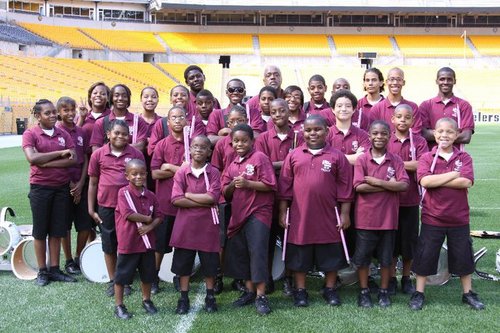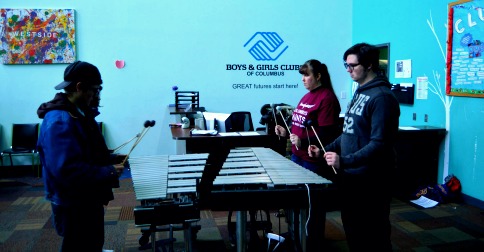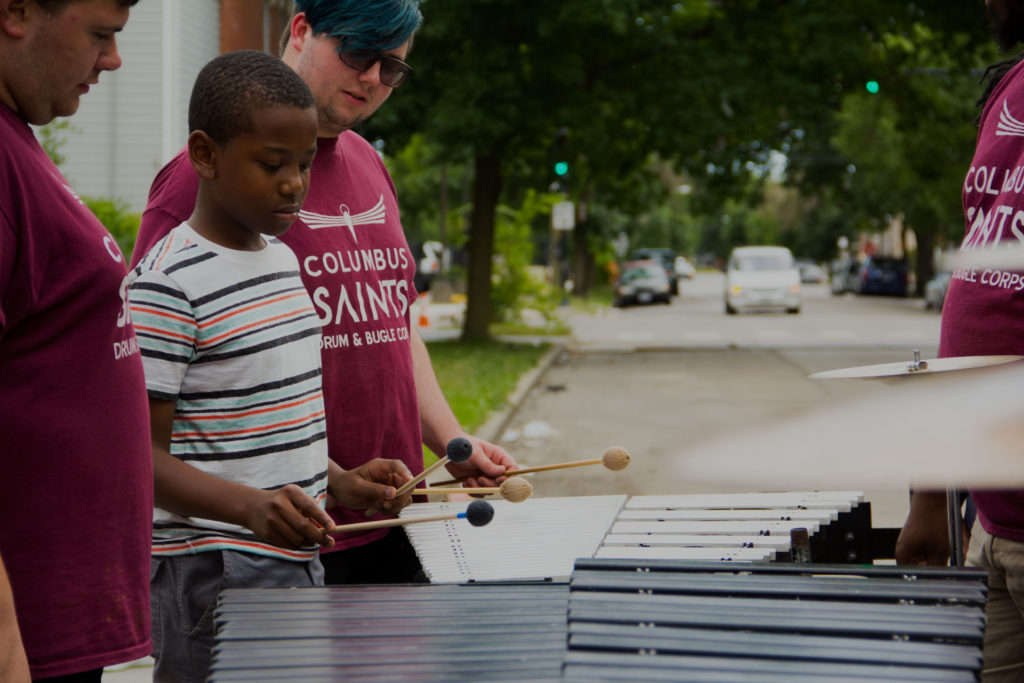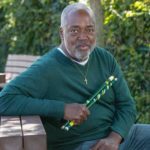Why is a Community Drum Corps activity necessary?
Drum corps is an amazing activity that brings people together, but also can be a vehicle to teach life skills, build local bonds and so much more. As the activity changes, we have to ask how the impact of the activity moving away from being local or regional focused can be creating a future with fewer opportunities for potential members, shows, and more.
What is Community Drum Corps?
The simplest way to describe a community drum corps is as a drum and bugle corps made up of amateur musicians in a specific location with a secondary mission such as the preservation of cultural arts, violence prevention, healthy living, community participation, or other objectives. It might be supported by the local (municipal) government, through neighborhood businesses, or it might be self-sufficient through member dues as well as having strong partnerships with other local non-profits. Corps will routinely practice music and complex marching music productions, and then perform for parades, contests, and other neighborhood events. Community corps employ educational, administrative, and diverse operational employees while being amateur musical ensembles.

Performing at Crew Stadium.
The Community Mission
Over the years, community drum corps have established themselves as one of the best-kept secrets programs that set their participants up for success. You are putting yourself in a position to succeed in the future by working together, exercising discipline, and striving to get better with each rep.
A recent television spot featured on Washington DC’s NBC 4 showcased the Washington VIP Drum & Bugle Corps, an American Legion / VFW era corps that dissolved in the earl 1970s. A alumni is quoted as saying “we joined an organization that taught us discipline, to compete, and more importantly to respect each other” (NBC4 Washington) .
A sense of communal pride that can only be shown when the community joins together has historically been established by community drum corps. Members who commit to the program start to experience pride and a sense of success as they endeavor to become the community’s ambassadors.
Saints Workshop at Major Adams Center, Chicago, IL
The Community Engagement
One of the key elements of the program is the parents and volunteers. The parent and volunteers are in charge of logistics, transportation, nourishment, and so much more. Their to-do list includes things like making sure kids are fed, have rides, or that nobody forgot their drumsticks or flag. The reward for all their hard work is seeing their community represented in a favorable way and the members having a unique developmental experience.

Saints partnered with Columbus Boys & Girls Club
The Community Support
The local community’s support of the community drum corps activity makes up the third component of the equation which is often a challenge once a program expands to draw members from nationwide. The connection to the community is harder to maintain because your members, staff, and volunteers are no longer local. This can feed into your access to local sponsors, grant funding, corporate social responsibility programs, which means programs can lose out on qualifying for thousands in funding. With that loss of funding, those costs may get passed on to members, and their families, which can make the activity cost prohibitive which limits who can participate, and possibly erode further community support.

Saints Workshop at Major Adams Center, Chicago, IL
The Results
The Saints developed a strategic plan titled “Sankofa 2023” in which we articulated our values as “Discipline, Leadership, Inclusiveness, and Community” which we’ve been working to achieve in our programming. The drum & bugle corps took the bold step to reduce membership fees by 25% from 2022, down to just $500 for the entire season, as a way to promote inclusiveness, and welcome more members from the community. We founded a WGI indoor percussion program focused on the providing a low cost experience, with the goal of giving performers an educational entry point to competitive percussion regardless if the come from a competitive school program. Our Winter guard expanded to include a new Junior Flag Line, giving children as young as 8 the chance to learn guard basics and perform in exhibition at local winter guard competitions.
In today’s world, I think we need more affordable, community centered drum corps to serve an audience that may not have access to other opportunities. When we center our programs in the community, amazing things can happen. When the three components of a community centered mission, engaged parents and volunteers, and a practical benefit to the community are working together, it can enable a program to sustain itself for years, while more importantly changing your community for the better.
About the author:
 Marshall Cheatham grew up in Chicago and was a member of the St Andrew’s Hornets Drum & Bugle Corps. He is a former college football playing for Vanderbilt University starting in 1979, and is a graduate of Tennessee State University with a degree in Social Work. He’s spent nearly 40 years working in the community as a social worker, juvenile counselor, juvenile corrections, and more. He is the founder of the Columbus Saints (formerly Saints Drumline Inc), and recently founded the non-profit Golf Not Guns as a violence diversion program to engage young people in the community. He is also a recipient of a donor kidney, and is a public speaker advocating for organ donation through Donate To Life, community development, and youth engagement, winning many awards for his work. He resides in Columbus, OH with his wife Lisa Brinson-Cheatham from NY.
Marshall Cheatham grew up in Chicago and was a member of the St Andrew’s Hornets Drum & Bugle Corps. He is a former college football playing for Vanderbilt University starting in 1979, and is a graduate of Tennessee State University with a degree in Social Work. He’s spent nearly 40 years working in the community as a social worker, juvenile counselor, juvenile corrections, and more. He is the founder of the Columbus Saints (formerly Saints Drumline Inc), and recently founded the non-profit Golf Not Guns as a violence diversion program to engage young people in the community. He is also a recipient of a donor kidney, and is a public speaker advocating for organ donation through Donate To Life, community development, and youth engagement, winning many awards for his work. He resides in Columbus, OH with his wife Lisa Brinson-Cheatham from NY.
References:
- “DC’s VIP Drum and Bugle Corps Tells Its Story.” NBC4 Washington, https://www.nbcwashington.com/news/local/dcs-vip-drum-and-bugle-corps-tells-its-story/3351443/. Accessed 31 May 2023.



